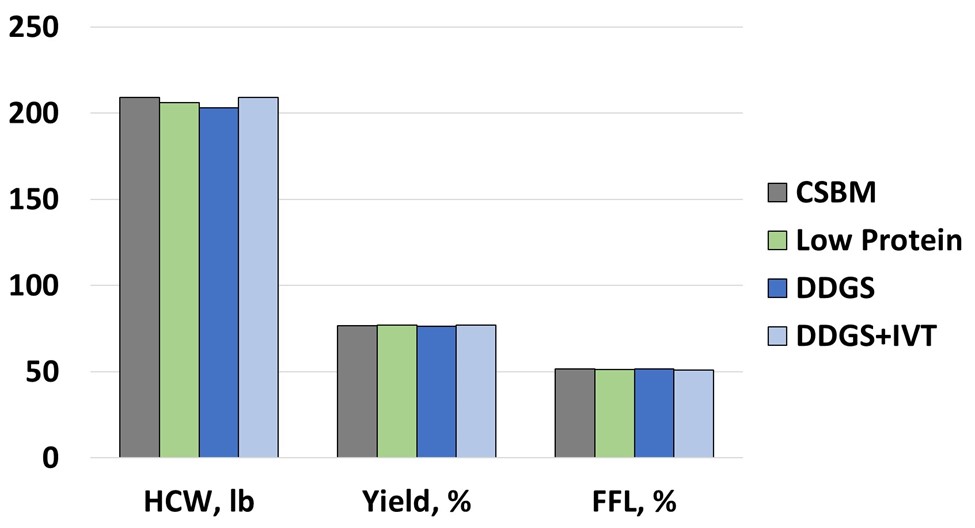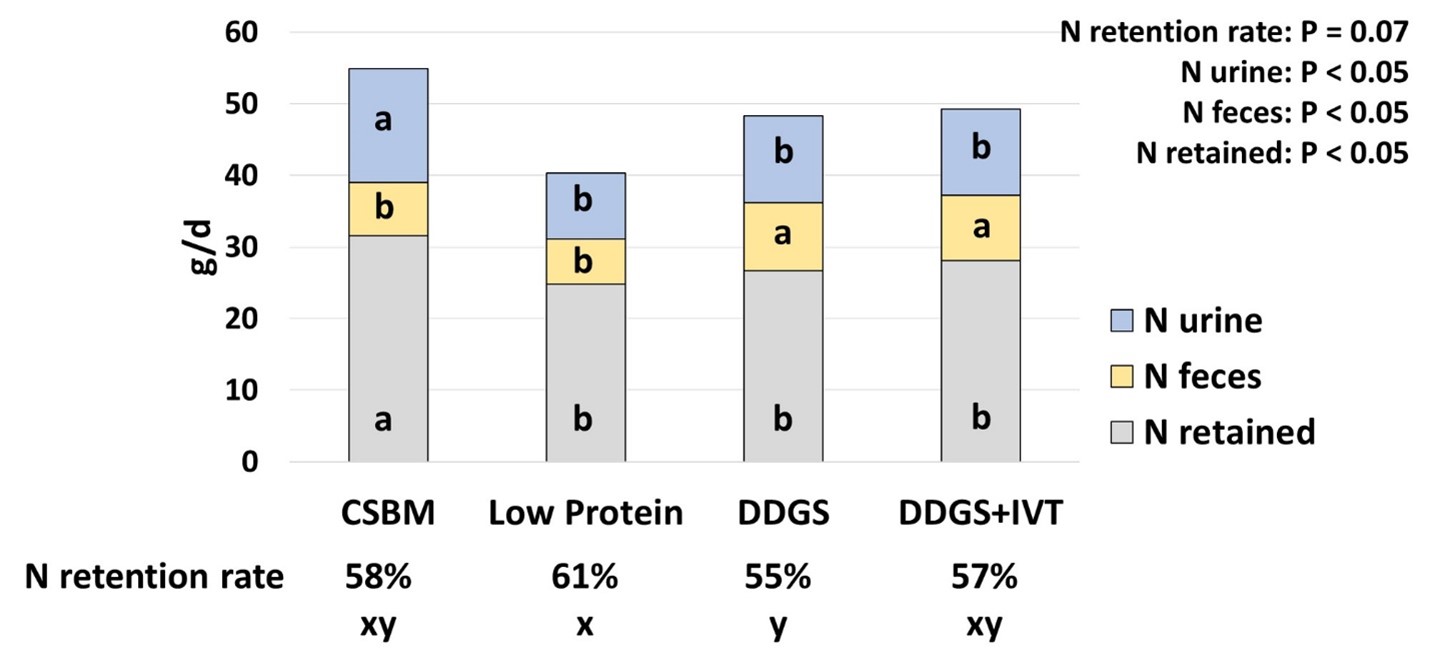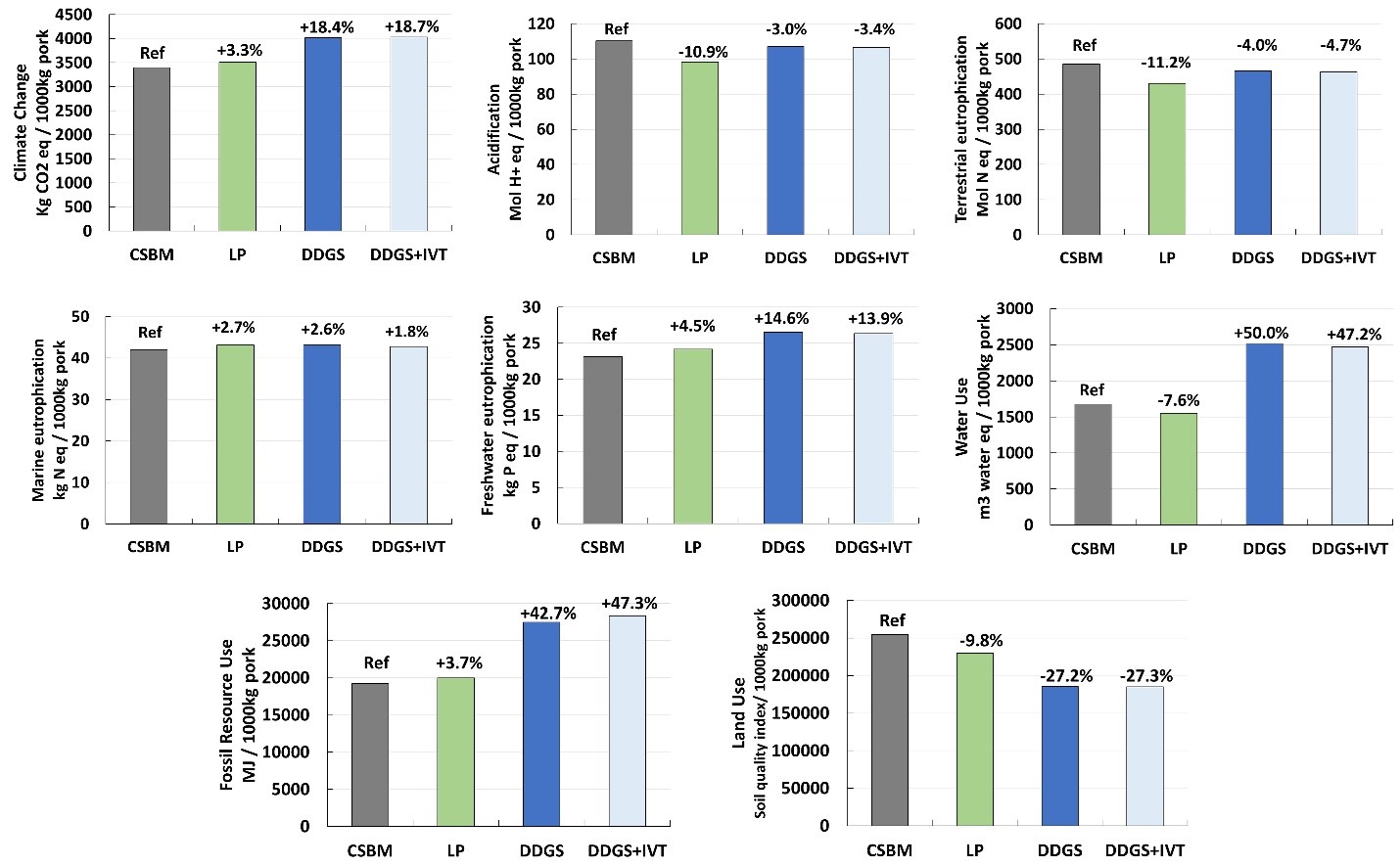As appeared in National Hog Farmer, 2023
Zhaohui Yang1, Pedro Urriola1, Lee Johnston2, and Gerald Shurson1
1Department of Animal Science, St. Paul, and 2West Central Research and Outreach Center, Morris University of Minnesota
Nitrogen (protein) and phosphorus are the second and third most expensive components of swine diets, respectively, after energy. However, the cost of these essential nutrients is much greater because only 10 to 44% of dietary nitrogen and 34% of phosphorus in swine diets is converted into boneless edible lean pork. Similar inefficiencies also apply toward producing meat, milk, and eggs from other food producing animals, and are the main reason why the global livestock and poultry industry contributes about one-third of total human-induced nitrogen emissions. As a result, the earth’s planetary boundaries for nitrogen and phosphorus waste and recovery have been exceeded, which requires implementing practices that improve nitrogen and phosphorus utilization efficiency and reduce the carbon footprint of animal production systems.
About 68% of nitrogen emissions and 47% of greenhouse gas (GHG) emissions, which include carbon dioxide, methane, and nitrous oxide from livestock farms are associated with feed production. Traditional swine diet formulation approaches have focused on minimizing cost while meeting energy and nutrient requirements to achieve acceptable growth performance and carcass characteristics but often with little regard toward minimizing environmental impacts.
Soybean meal continues to be an excellent dietary protein source for swine because of its complementary amino acid profile with corn and high digestible amino acid concentrations, but there are several formulation practices that can partially replace soybean meal in swine diets. Corn distillers dried grains with solubles (DDGS) is produced in large quantities and often less expensive than corn and soybean meal, and is commonly added at levels up to 30% in growing-finishing swine diets. However, high inclusion of DDGS in swine diets can result in suboptimal growth performance and carcass composition if diet formulation adjustments are not made to overcome digestible amino acid imbalances. Also, the addition of relatively high amounts of crystalline amino acids to reduced crude protein swine diets is becoming a popular strategy to reduce the amount of soybean meal used and diet cost, but this strategy can also result in suboptimal growth performance and carcass composition.
Types and sources of feed ingredients, diet formulation approaches, and feeding practices not only affect lean gain efficiency, but also the environmental impacts of pork production. Precision diet formulation and feeding programs have been shown to reduce cost of production by more than 8%, protein and phosphorus intake by 25% and excretion by 40%, and GHG emissions by 6% through improved nutrient utilization efficiency in commercial pork production systems. Therefore, we conducted a series of studies (funded by the United Soybean Board) to determine then nitrogen (and phosphorus) utilization efficiency and other environmental impacts of grower-finisher feeding programs containing variable amounts of soybean meal as the primary protein source, without and with 30% DDGS, crystalline amino acids, and phytase using precision diet formulation approaches to achieve optimal growth performance and carcass composition. Precision diet formulation was based on using dynamically determined net energy, digestible amino acid and phosphorus nutrient loading values for the sources of corn, soybean meal and DDGS being fed. Diets within each of the following 4-phase feeding programs consisted of:
1) corn and soybean meal (CSBM);
2) low protein CSBM diets supplemented with crystalline amino acids (LP);
3) CSBM diets with 30% distillers dried grains with solubles (DDGS);
4) DDGS diets supplemented with crystalline isoleucine, valine, and tryptophan (DDGS+IVT).
The first study was conducted to determine effects of feeding program on growth performance and carcass characteristics. A total of 288 pigs (initial body weight = 80 lb.) were fed for 12-wk at the University of Minnesota West Central Research and Outreach Center (Morris, MN), scanned to obtain backfat and loin muscle area measurements before shipping, and were slaughtered at Hormel Foods (Austin, MN) to obtain hot carcass weights of individual pigs. No differences were observed in average daily gain and feed intake, but pigs fed CSBM had greater final BW than those fed LP and DDGS, and greater gain efficiency than pigs fed LP. However, supplementing crystalline isoleucine, valine, and tryptophan in diets containing high levels of DDGS improved final body weight of pigs compared to feeding the DDGS diets without these dietary amino acid adjustments. No differences were observed for hot carcass weight, carcass yield, or carcass fat-free lean percentage among pigs fed using any of the four feeding programs. Therefore, these results indicate that CSBM and DDGS+IVT feeding programs provided the greatest gain efficiency but provided no advantages for carcass lean percentage compared with the other feeding programs.
The second study was conducted to determine the effects of feeding the phase 2 grower diets used in each of the 4 feeding programs evaluated in the first study, on nitrogen and phosphorous balance. A total of 32 barrows (initial body weight = 130 lb.) were housed in metabolism crates at the University of Minnesota Southern Research and Outreach Center (Waseca, MN) for a 12-day metabolism study. Pigs fed CSBM had a greater amount of nitrogen retained than pigs fed the other diets, but also had a greater amount of urinary nitrogen excretion and blood urea nitrogen than pigs fed the LP and DDGS+IVT diets. Pigs fed the LP diet tended to have the highest nitrogen utilization efficiency but the lowest percentage phosphorus retained as a percentage of phosphorus intake among diets.
Using the growth performance and carcass composition data from the previous experiments, we determined the Life Cycle Assessment (LCA) of the environmental impacts of producing 2,205 lbs of pork carcass weight from each feeding program using the Opteinics™ software (BASF, Lampertheim, Germany). Life cycle assessment is a systematic analysis to quantify the environmental impacts of inputs and outputs of products during the entire life cycle. Our results showed that the CSBM feeding program had the least impact on climate change (GHG emissions), marine eutrophication, freshwater eutrophication, and fossil resource use, while the LP feeding program had the least impact on acidification, terrestrial eutrophication, and water use among the four feeding programs evaluated. The DDGS and DDGS+IVT feeding programs had the lowest impact on land use.
These results indicate that while all these feeding programs were superior to the other feeding programs in one or more of environmental impact measures, none of them were superior in all criteria. However, the CSBM feeding program provided optimal growth performance and carcass composition of growing-finishing pigs while simultaneously reducing impacts on climate change, eutrophication potential, and fossil resource use compared with the other feeding programs evaluated. Results from this study demonstrate how the use of LCA data for assessing various environmental impacts of feed ingredients, diets, and feeding programs can provide important information that enables pork producers to choose feeding programs that meet specific sustainability goals.
Moving forward, sustainable swine feeding programs must be based on using multi-objective feed formulation that puts constraints on high priority LCA environmental impact measures that involve N and P utilization efficiency, GHG emissions, water consumption, and land use in additional to meeting nutritional requirements to optimize pig performance and carcass composition at a reasonable cost. This will require integration with real-time determination of nutrient loading values of actual sources of feed ingredients used in feed formulation and precision feeding practices to “get the right feed to the right pigs at the right time”.




